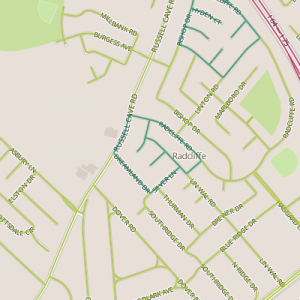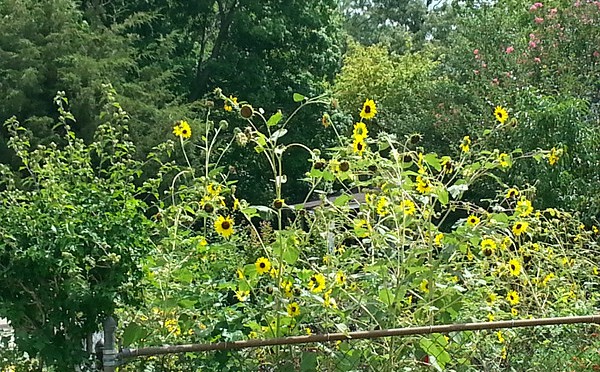 Today I visited a neighborhood off of Russell Cave Road called Radcliffe. The area through which I walked was originally built out over a relative long period stretching from the early 1950’s until well into the mid 1960’s and had a correspondingly diverse range of construction types and styles. Overall, my impression of this neighborhood was fairly typical for neighborhoods from this period. It was pleasant to walk through, and probably the most fragrant (or at least, pleasantly fragrant) of any I’ve walked through all summer. The people I ran into were all pleasant. And I think the good weather (cool, cloudy, nice breeze) may affect my judgment, it felt shady and cool despite relatively few street trees.
Today I visited a neighborhood off of Russell Cave Road called Radcliffe. The area through which I walked was originally built out over a relative long period stretching from the early 1950’s until well into the mid 1960’s and had a correspondingly diverse range of construction types and styles. Overall, my impression of this neighborhood was fairly typical for neighborhoods from this period. It was pleasant to walk through, and probably the most fragrant (or at least, pleasantly fragrant) of any I’ve walked through all summer. The people I ran into were all pleasant. And I think the good weather (cool, cloudy, nice breeze) may affect my judgment, it felt shady and cool despite relatively few street trees.
Neighborhoods sometimes have subtle signs of distress, and this one had a few. Among the many well kept yards, there were a few that were running wild, a few places where liquor bottles were disposed inconspicuously or smashed. And the neighborhood seems to have some high turnover despite other owners who have lived in their homes for decades, with some houses being sold this year for two thirds of what they were sold for eight years ago. Though this area seems to exemplify the housing crisis and it’s impact on Lexington, it also feels like it’s close to coming through the crisis.
Though it was very evident here, every neighborhood has its nice yards and its wild ones (and in my neighborhood, to be honest, my yard is one of the wild ones). Generally, neighborhoods seem to have some self-regulation. A degree of weediness or wildness may be tolerated (or even preferred) in some neighborhoods while others consist almost entirely of perfectly manicured lots. And this becomes an interesting psychological question–do residents take after their neighbors in caring for their yards, or is this self-regulation really the result of people self-sorting into neighborhoods with yards that they themselves would be comfortable maintaining? And, when this self-regulation breaks down, how does the neighborhood react? Is their an informal mechanism for correction (which may or may involve a homeowner’s association)?
